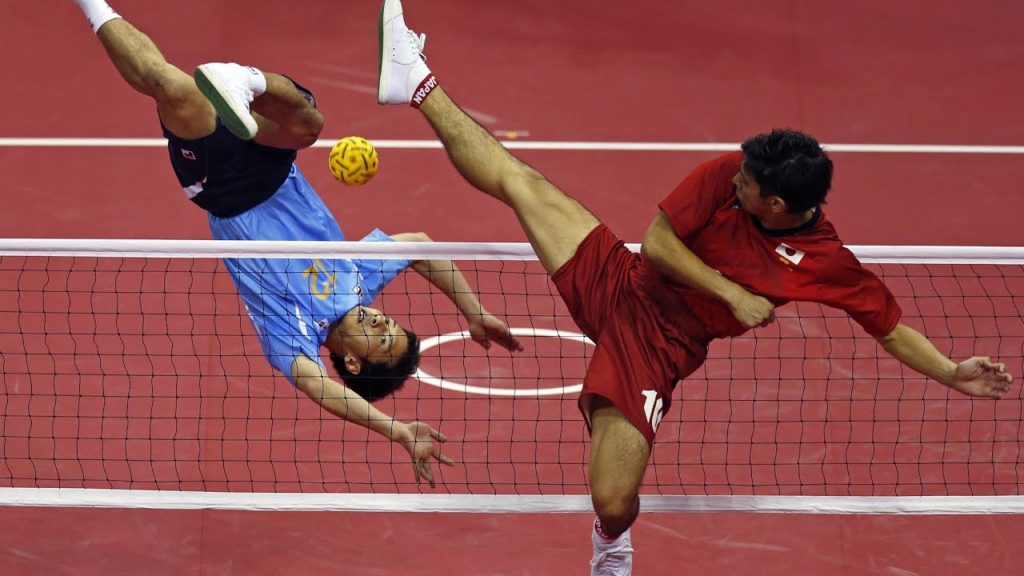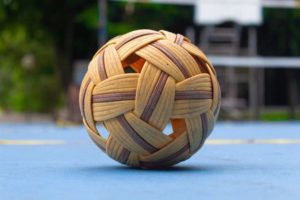
Have you ever tried a game of Sepak takraw, Malaysia’s answer to kick volleyball? In Malaysia, this popular sport is where players touch and handle a woven rattan ball using only their feet, knees, chest, and head but not their hands.

The origins of Sepak takraw are unclear; however, some say it was influenced by one of China’s traditional games, Cuju, an ancient military exercise. Here, soldiers tried to keep a feathered shuttlecock airborne by kicking it back and forth between two people. As the sport developed, the animal hide and chicken feathers were replaced by balls made of woven strips of rattan.
The earlier versions of Sepak takraw were not so much of a competition but rather a show of skills designed to activate the body, improve agility, and loosen the limbs after prolonged sitting, standing, or working.
By 1940, the net version of the game became more streamlined in Southeast Asia, and formal rules and regulations were formed. The first Sepak takraw contest was held at a swim club in 1945, in Penang, mainly with participants from various villages. The game gained popularity across Southeast Asia, and by the 1950s, it was widely played in schools. By 1990, Sepak takraw was introduced at the Asian Games, and Malaysia was the first country to win the gold medal and again at the 1994 Hiroshima games.
The rules of Sepak Takraw
- Two teams, each with three players.
- The team to serve first is decided by a coin toss.
- Play begins when the server is thrown the ball by a teammate who then must kick the ball over the net while keeping one foot in the service circle.
- Players may only touch the ball with their feet, head, knees, and chest. Touching the ball with the hand or any other body part can result in a fault and a point for the opposition.
- Each team is allowed a maximum of three touches of the ball before returning the ball over the net without letting it touch the ground.
- Failure to return the ball over the net before it hits the ground results in a point to the opposition.
- The first team to reach 21 points wins a set. The first team to win two sets is the winner!
Click here to watch the game in action – it looks a lot easier than it is!


